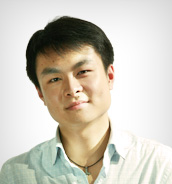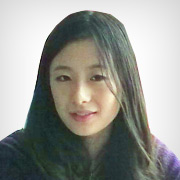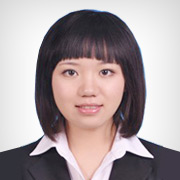| 资料类别 |
07年6月英语四级新题型最新模拟试题及答案(一) |
| 资料简介 |
英语四级新题型最新模拟试题及答案 |
| 资料格式 |
Word格式 |
| 资料来源 |
考试吧 (Exam8.com) |
| 资料下载 |
点击这里下载 |
大学英语4级考试
College English Model Test one
—Band Four—
Part ⅠWriting(30 minutes)
Directions: For this part, you are allowed thirty minutes to write a composition on the topic: AidEducation in China. You should write at least 120 words following the outline given in Chinese below:
1. 每年,高校许多大学生受到鼓舞去贫困地区支教。
2. 支教活动的意义。
3. 我的看法。
提示:在实考试卷中,该试题在答题卡1上。
Aid——Education in China
Part ⅡReading Comprehension (Skimming and Scanning)(15 minutes)
Directions:In this part,you will have 15 minutes to go over the passage quickly and answer the questions on Answer Sheet 1. For questions 1-7,mark
Y(for YES)if the statement agrees with the information given in the passage;
N(for NO)if the statement contradicts the information given in the passage;
NG(for NOT GIVEN)if the information is not given in the passage.
For questions 8-10,complete the sentences with information given in the passage.
Will We Run Out of Water?
Picture a “ghost ship” sinking into the sand, left to rot on dry land by a receding sea. Then imagine dust storms sweeping up toxic pesticides and chemical fertilizers from the dry seabed and spewing them across towns and villages.
Seem like a scene from a movie about the end of the world? For people living near the Aral sea (咸海) in Central Asia, it's all too real. Thirty years ago, government planners diverted the rivers that flow into the sea in order to irrigate (provide water for ) farmland. As a result, the sea has shrunk to half its original size, stranding (使搁浅) ships on dry land. The seawater has tripled in salt content and become polluted, killing all 24 native species of fish.
Similar large——scale efforts to redirect water in other parts of the world have also ended in ecological crisis, according to numerous environmental groups. But many countries continue to build massive dams and irrigation systems, even though such projects can create more problems than they fix. Why? People in many parts of the world are desperate for water, and more people will need more water in the next century.
“Growing populations will worsen problems with water,” says Peter H.Gleick, an environmental scientist at the Pacific Institute for studies in Development, Environment, and Security, a research organization in California. He fears that by the year 2025, as many as one——third of the world's projected (预测的) 8.3 billion people will suffer from water shortages.
WHERE WATER GOES
Only 2.5 percent of all water on Earth is freshwater, water suitable for drinking and growing food, says Sandra Postel, director of the Global Water Policy Project in Amherst, Mass. Two——thirds of this freshwater is locked in glaciers (冰山) and ice caps (冰盖). In fact, only a tiny percentage of freshwater is part of the water cycle, in which water evaporates and rises into the atmosphere, then condenses and falls back to Earth as precipitation (rain or snow).
Some precipitation runs off land to lakes and oceans, and some becomes groundwater, water that seeps into the earth. Much of this renewable freshwater ends up in remote places like the Amazon river basin in Brazil, where few people live. In fact, the world's population has access to only 12,500 cubic kilometers of freshwater—about the amount of water in Lake Superior(苏必利尔湖). And people use half of this amount already. “If water demand continues to climb rapidly,” says Postel, “there will be severe shortages and damage to the aquatic (水的) environment.”
CLOSE TO HOME
Water woes(灾难) may seem remote to people living in rich countries like the United States. But Americans could face serious water shortages, too especially in areas that rely on groundwater. Groundwater accumulates in aquifers (地下蓄水层),layers of sand and gravel that lie between soil and bedrock. (For every liter of surface water, more than 90 liters are hidden underground.) Although the United States has large aquifers, farmers, ranchers, and cities are tapping many of them for water faster than nature can replenish(补充) it. In northwest Texas, for example, overpumping has shrunk groundwater supplies by 25 percent, according to Postel.
Americans may face even more urgent problems from pollution. Drinking water in the United States is generally safe and meets high standards. Nevertheless, one in five Americans every day unknowingly drinks tap water contaminated with bacteria and chemical wastes, according to the Environmental Protection Agency. In Milwaukee, 400,000 people fell ill in 1993 after drinking tap water tainted with cryptosporidium (隐孢子虫),a microbe (微生物) that causes fever, diarrhea (腹泻) and vomiting.
THE SOURCE
Where so contaminants come from? In developing countries, people dump raw (未经处理的) sewage(污水) into the same streams and rivers from which they draw water for drinking and cooking; about 250 million people a year get sick from water borne (饮水传染的) diseases.
In developed countries, manufacturers use 100,000 chemical compounds to make a wide range of products.Toxic chemicals pollute water when released untreated into rivers and lakes. (Certain compounds, such as polychlorinated biphenyls (多氯化联二苯),or PCBs, have been banned in the United States.)
But almost everyone contributes to water pollution. People often pour household cleaners, car antifreeze, and paint thinners (稀释剂) down the drain; all of these contain hazardous chemicals. Scientists studying water in the San Francisco Bay reported in 1996 that 70 percent of the pollutants could be traced to household waste.
Farmers have been criticized for overusing herbicides and pesticides, chemicals that kill weeds and insects but insects but that pollute water as well. Farmers also use nitrates, nitrogen——rich fertilizer that helps plants grow but that can wreak havoc (大破坏) on the environment. Nitrates are swept away by surface runoff to lakes and seas. Too many nitrates “overenrich” these bodies of water, encouraging the buildup of algae, or microscopic plants that live on the surface of the water. Algae deprive the water of oxygen that fish need to survive, at times choking off life in an entire body of water.
WHAT'S THE SOLUTION?
Water expert Gleick advocates conservation and local solutions to water——related problems; governments, for instance, would be better off building small——scale dams rather than huge and disruptive projects like the one that ruined the Aral Sea.
“More than 1 billion people worldwide don't have access to basic clean drinking water,” says Gleick. “There has to be a strong push on the part of everyone—governments and ordinary people—to make sure we have a resource so fundamental to life.”
提示:在实考试卷中,8-10题在答题卡1上。
1. That the huge water projects have diverted the rivers causes the Aral Sea to shrink.
2. The construction of massive dams and irrigation projects does more good than harm.
3. The chief causes of water shortage are population growth and water pollution.
4. The problems Americans face concerning water are ground water shrinkage and tap water pollution.
5. According to the passage all water pollutants come from household waste.
6. The people living in the United States will not be faced with water shortages.
7. Water expert Gleick has come up with the best solution to water—related problems.
8. According to Peter H. Gleick, by the year 2025, as many as of the world's people will suffer from water shortages.
9. Twothirds of the freshwater on Earth is locked in .
10. In developed countries, before toxic chemicals are released into rivers and lakes, they should be treated in order to avoid .
Part Ⅲ Listening Comprehension(35 minutes)
Section A
Directions:In this section, you will hear 8 short conversations and 2 long conversations.At the end of each conversation,one or more questions will be asked about what was said.Both the conversation and the questions will be spoken only once.After each question there will be a pause. During the pause, you must read the four choices marked A),B),C) and D),and decide which is the best answer. Then mark the corresponding letter on Answer Sheet 2 with a single line through the centre.
11. A) Talk to his sister.
B) Look at a map.
C) Go on a diet.
D) Tell the man why.
12. A) Do whatever has been planned.
B) Have a picnic and go camping.
C) Eat out and see a play.
D) Go to the beach.
13. A) The weather was better.
B) The weather was a little bit warmer.
C) The weather was a little bit colder.
D) The weather was cooler than expected.
14. A) Mr. Steward is honest.
B) Mr. Steward looks honest.
C) Mr. Steward looks dishonest.
D) Mr. Steward is dishonest.
15. A) He did quite well with it.
B) He has money problem now.
C) He is in need of qualified staff.
D) He could not carry it on any more.
16. A) $2.00. B) $6.00. C) $4.00. D) $5.00.
17. A) They will spend the summer in Italy.
B) They are both from Europe.
C) They are both students.
D) They are both interested in art.
18. A) Not getting what she wants.
B) A custom that is new to her.
C) Calling up customers.
D) Some of her good friends.
Question 19 to 22 are based on the conversation you have just heard.
19. A) A more economical diesel fuel.
B) Characteristics of a new type of fuel.
C) Where a new energy source is located.
D) How to develop alternative energy sources.
20. A) He's studying for a test.
B) He lost his notes.
C) He missed the class.
D) He's doing research on alternative.
21. A) It will reduce the amount of pollutants in the air.
B) It will increase the amount of unpleasant odors from vehicles.
C) It will eventually destroy the ozone layer.
D) It will reduce the cost of running large vehicles.
22. A) To help him explain the information to his roommate.
B) To help him write a paper.
C) To prepare for a test.
D) To tell her if the notes are accurate.
Question 23 to 25 are based on the conversation you have just heard.
23. A) The woman has passed her final exams.
B) The woman wants to know how to write term papers.
C) The woman is going to visit Gettysburg.
D) The man introduces his experiences in Gettysburg.
24. A) Because her parents like traveling.
B) Because her parents like history.
C) Because traveling in such places costs less.
D) Because her parents want to reinforce the stuff they learned in school about history.
25. A) It is far away from the city she lives in.
B) It is a place where many great people were born.
C) It has a certain political influences in the United States right after the battle at Gettysburg.
D) It is worth reading history about Gettysburg.














